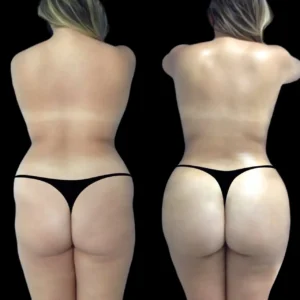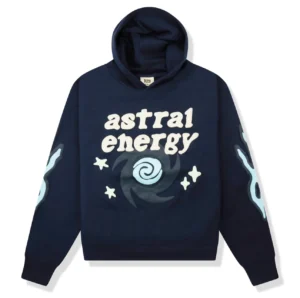
Let’s face it—riding a motorcycle isn’t always about sunshine and perfect 70-degree days. Sometimes, we gear up, hit the road, and find ourselves riding through biting cold or battling crosswinds that feel like they’re trying to knock us into the next lane. If you’ve ever clutched your handlebars a little tighter when the wind picks up or lost feeling in your fingertips halfway into a winter ride, you already know that wind and cold aren’t just uncomfortable—they directly affect how your bike handles and how you react.
In this article, we’re breaking down exactly how wind and cold weather impact motorcycle handling and rider responsiveness, and—more importantly—how you can prepare and protect yourself with the right mindset, techniques, and of course, the right gear.
Wind Isn’t Just Inconvenient—It’s Influential
You might think of wind as just an annoying factor that messes with your hair or makes your helmet whistle. But when you’re on two wheels, wind can literally change the direction of your bike—especially at highway speeds.
How Wind Affects Handling:
- Crosswinds: Strong gusts from the side can push your bike off its line. This is especially dangerous when passing trucks or riding on open stretches.
- Headwinds: Reduce your speed and increase resistance, meaning you’ll need more throttle just to maintain pace.
- Tailwinds: While they might help with fuel economy, they can make braking distances harder to gauge since you’re going faster with less perceived effort.
Real-Life Rider Scenario:
Imagine cruising down the highway in your leather jacket vest and riding shirt, the road stretching wide. Suddenly, a gust hits from the side as you pass a semi. You’re forced to lean against the wind to stay upright—and if you’re not ready for it, you can drift dangerously close to the lane divider or even into another vehicle’s path.
Lesson: Wind changes everything. Your body acts as a sail, and your bike, as stable as it may be, can be bullied by mother nature if you’re not focused.
Cold Weather and Its Impact on Reaction Time
Riding in the cold isn’t just about discomfort—it actually impacts your motor skills, reflexes, and decision-making. When your hands, knees, or core are cold, your ability to react in a split second can be delayed. That’s not just a theory—it’s a fact backed by science and experienced by many cold-weather riders.
What Cold Does to the Rider:
- Slower Reflexes: Cold muscles don’t move as quickly or precisely. Your reaction time increases.
- Reduced Grip Strength: Numb hands mean weaker clutch control, throttle roll-on, and brake feel.
- Mental Fatigue: Cold temperatures can make your brain sluggish, which affects decision-making and focus.
And Let’s Not Forget the Bike…
Cold affects tire grip, too. Until your tires warm up, they don’t grip the road like they’re supposed to. Combine that with cold pavement, and you’re skating on thin rubber.
Quick Tip: Always ride a bit more conservatively in the cold—your bike and your body both need time to warm up.
The Role of Gear in Battling Wind and Cold
Now, here’s the good news: while you can’t control the weather, you can gear up like a pro to protect yourself and your ride.
1. Windproof Jackets and Layering
That old leather jacket might look cool, but is it windproof? Modern riding gear comes with wind-blocking layers, high collars, and secure closures to keep wind from cutting through.
Rider Favorite: Look for jackets with thermal liners and snug cuffs. Bonus points if it has a storm flap over the zipper.
2. Insulated Gloves
Your hands are your primary controls. Frozen fingers can’t feel throttle modulation or emergency braking. Invest in insulated, windproof gloves, or go electric with heated options.
3. Base Layers and Riding Shirts
A good thermal base layer or armored riding shirt underneath your jacket not only adds protection but also traps body heat without the bulk.
4. Windproof Riding Pants or Bibs
Don’t forget the legs! Riding jeans may not cut it on a windy winter ride. Look for lined pants or over-pants that stop wind in its tracks.
5. Face and Neck Protection
Wind sneaking through your collar or helmet can chill you fast. Use a balaclava, neck tube, or scarf to block out drafts and keep your neck warm and mobile.
Adjusting Your Riding Technique for Wind and Cold
Gear is essential, but your technique is just as important.
In the Wind:
- Stay Loose, Not Rigid: A death grip on the bars only makes things worse. Let the bike move slightly with the wind; don’t fight it completely.
- Lean Into Crosswinds: Slight counter-steering or leaning helps maintain your line.
- Watch the Trees and Signs: They can give early warnings of gusts ahead.
- Avoid Riding Beside Large Trucks: Their wind turbulence can throw you off balance.
In the Cold:
- Ride Slower and Brake Sooner: Cold tires and roads mean less grip. Give yourself extra time for every maneuver.
- Use Body Heat Management: Stop for warm-ups if needed. Bring a thermos or hand warmers on longer rides.
- Check Tire Pressure Often: Cold weather lowers tire pressure—underinflated tires handle poorly.
Bonus: Mental Game of Riding in Harsh Conditions
Riding in wind and cold isn’t just physical—it’s mental. Your focus and mindset can fade quicker when you’re cold or stressed by tough wind. That’s why staying alert, planning your moves, and knowing your limits is critical.
If you’re getting distracted, shivering, or just not feeling 100%, pull over and reassess. It’s better to arrive late than not at all.
Final Thoughts: Respect the Wind, Prepare for the Cold
Wind and cold are two of the trickiest, most underestimated forces a rider can face. But with awareness, proper gear, and thoughtful riding habits, you can handle them with confidence.
When the temperature drops and the wind starts howling, it’s not time to put the bike away — it’s time to layer up, zip up that protective jacket, pull on those insulated gloves, and ride smart. Because at the end of the day, the only thing cooler than riding through the cold is doing it safely and in style.






